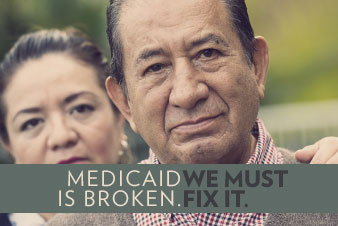Media

Saving Medicaid
Obamacare proponents insist the American Health Care Act (AHCA) will cut $800 billion from Medicaid and jeopardize care for the disabled and children. This claim is oft-repeated, but it is patently false. The AHCA doesn’t cut federal Medicaid spending. It increases spending by $120 billion.
Federal lawmakers are in danger of missing out on a chance to transform Medicaid—a program providing poor care to about one-quarter of Americans and driving the federal government’s soaring debt.
Dubious Congressional Budget Office (CBO) assumptions, which overestimate the AHCA's ability to slow Medicaid spending, and the use of medical inflation could sink efforts to put Medicaid on a sustainable path.
To start, CBO assumes more states would have expanded Medicaid in 2017 and beyond if not for recent repeal efforts. Those hypothetical expansion efforts that will never come to fruition count as “savings.” Next, the office assumes savings from people who will leave Medicaid with the repeal of the individual mandate. It’s highly unlikely people will drop low-cost health insurance. Finally, the CBO’s per beneficiary spending growth estimates are highly suspect. Experience shows they are wildly off the mark, typically by several percentage points each year.
The use of the medical inflation index is especially concerning. The AHCA would fund states based on their 2016 Medicaid spending per recipient. The per capita funding would increase each year, through 2019, by the Consumer Price Index for Medical Care (CPI-M). Beginning in 2020, per-capita federal funding for the elderly and disabled population grow at CPI-M plus 1 percent.
The problem is medical inflation is not a good metric by which to increase government spending. As the chart below shows, CPI-M has grown much faster than historical Medicaid per beneficiary spending since 1999 (and faster than tax revenues).
A simple change would produce real Medicaid savings and maintain state flexibility to improve quality. Senator Toomey is proposing indexing per-capita caps to a more accurate consumer price index instead of an index tied to medical expenses.
There’s no question Medicaid as we know it cannot continue. Pennsylvania Medicaid spending is projected to grow at 6.7% annually over the next five years while the economy grows at 2%. Nationally, the CBO projects federal Medicaid payments will grow about 5% a year through 2021, while GDP grows about 4%.
Reforms at the federal level should allow for sustainable Medicaid growth while giving states the flexibility to improve health outcomes and create a tenable pathway out of poverty.
An aggregate per-capita cap that grows with inflation is a good start, but further reforms like work requirements and health savings account (HSA) options are essential to, in the words of Governor Wolf, make “health care more affordable, more sustainable, and more accessible.”